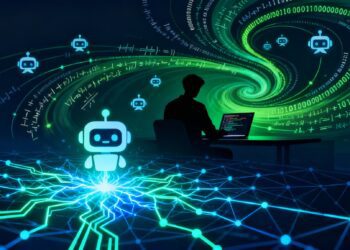OpenAI’s secretive video generator, Sora, has been thrust into the spotlight. A group calling themselves the “Sora PR Puppets” leaked access to this cutting-edge tool. Their actions have ignited discussions about transparency, artist compensation, and the ethics of AI development.
The Unexpected Leak of Sora
On Tuesday, a mysterious group published a project on the AI development platform Hugging Face. This project appeared to tap into OpenAI’s unreleased Sora API. Using what seemed to be their own authentication tokens—likely obtained through early access—they crafted a frontend that allowed anyone to generate videos with Sora.

Through this makeshift interface, users could produce 10-second videos at resolutions up to 1080p. While the queue was lengthy, several users on X (formerly Twitter) managed to share samples. Many of these videos bore OpenAI’s visual watermark, hinting at their origin. However, the window of opportunity was brief. By 12:01 p.m. Eastern, the frontend ceased functioning. It’s speculated that either OpenAI or Hugging Face intervened to revoke access.
The group claimed that within three hours, OpenAI temporarily shut down Sora’s early access for all artists. This swift response underscored the significance of the leak and the tensions brewing beneath the surface.
The Motives Behind the Leak
Why would a group take such a bold step? The “Sora PR Puppets” allege that OpenAI is pressuring early testers—including red teamers and creative partners—to portray Sora positively. They also accuse OpenAI of failing to fairly compensate these contributors for their efforts.
In their statement, the group expressed frustration: “Hundreds of artists provide unpaid labor through bug testing, feedback, and experimental work for a $150 billion-valued company. This early access program appears to be less about creative expression and critique, and more about PR and advertisement.”

They argue that OpenAI keeps early access users on a tight leash. Every output from Sora requires approval before it can be shared. Only a select few creators are chosen to have their Sora-generated works showcased. “We are not against the use of AI technology as a tool for the arts,” they clarified. “What we don’t agree with is how this artist program has been rolled out and how the tool is shaping up ahead of a possible public release.”
Initially, the group remained anonymous. But as the day unfolded, they began revealing members’ identities. One notable name was Maribeth Rauh, a former research engineer at Google DeepMind until April. Their decision to step into the limelight added weight to their claims and brought more attention to the issues at hand.
OpenAI’s Response
In light of the leak and the allegations, OpenAI released a statement aiming to clarify their position. A spokesperson emphasized that Sora remains in a “research preview.” They stated, “We’re working to balance creativity with robust safety measures for broader use.“
Addressing the concerns about artist involvement, the spokesperson added, “Hundreds of artists in our alpha have shaped Sora’s development, helping prioritize new features and safeguards. Participation is voluntary, with no obligation to provide feedback or use the tool. We’ve been excited to offer these artists free access and will continue supporting them through grants, events, and other programs.”
They further highlighted their commitment to making AI a positive force in creative fields: “We believe AI can be a powerful creative tool and are committed to making Sora both useful and safe.“
However, some ambiguities remained. While they mentioned that artists have “no obligations” beyond using Sora responsibly and not sharing confidential details, they didn’t specify what constitutes “responsible” use or which details are considered confidential.

The Challenges Facing Sora
Sora’s journey hasn’t been smooth. Since its debut earlier this year, the video generator has faced technical hurdles. Competitors in the video generation space are rapidly advancing, putting pressure on OpenAI to refine Sora.
One significant setback was the departure of Tim Brooks, one of Sora’s co-leads, who left OpenAI for Google in early October. Such changes can impact development trajectories and team dynamics.
In a recent Reddit AMA, OpenAI’s chief product officer, Kevin Weil, shed some light on the delays. He cited the need to perfect the model, address safety concerns like impersonation, and scale computing resources. According to a report by The Information, the initial version of Sora took over 10 minutes to generate a one-minute video clip—a duration that’s impractical for widespread use.
Consistency has also been a challenge. Filmmaker Patrick Cederberg shared his experience, noting that he had to generate hundreds of clips before obtaining a usable one. The model struggled to maintain styles, objects, and characters consistently throughout videos.
Interestingly, the leaked version of Sora appeared to be a faster “turbo” variant. Code uncovered by users on X revealed the existence of style controls and limited customization options. This suggests that OpenAI is making strides in improving the tool’s performance and user interface.
To enhance Sora’s capabilities, OpenAI has been training the model on millions of hours of high-quality clips spanning various styles and subjects. This extensive dataset aims to improve the quality and diversity of generated videos.

Competition and Industry Dynamics
While OpenAI grapples with Sora’s development, rivals are seizing opportunities. In September, Runway inked a deal with Lionsgate, the studio behind “John Wick,” to train a custom video model using Lionsgate’s movie catalog. Shortly after, Stability AI, working on its suite of video generation models, welcomed “Avatar” director James Cameron to its board.
Earlier this year, OpenAI was reportedly engaging with filmmakers and Hollywood studios to showcase Sora. Former CTO Mira Murati even attended the Cannes Film Festival, signaling OpenAI’s interest in forging industry partnerships. However, despite these efforts, the company has yet to announce any collaborations with major production houses.
Looking Ahead
The leak of Sora has opened a Pandora’s box of discussions about AI, ethics, and the future of creative tools. It highlights the delicate balance between innovation and responsibility. While AI holds immense potential for the arts, the pathways to integrating these technologies must be navigated thoughtfully.
The actions of the “Sora PR Puppets” underscore a desire for greater transparency and fairness. As AI continues to evolve, so too must the frameworks that govern its development and deployment. Only then can we harness its full potential while respecting the rights and contributions of all stakeholders.









